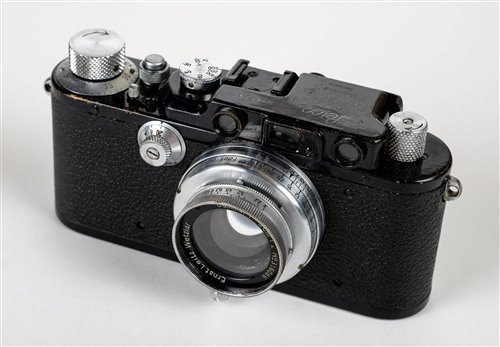
I suspect I’m not the only one to find the early Leica product nomenclature confusing. When I found out, and discovered it was precisely what I was looking for, I still didn’t intend to buy one that’s quite as old as mine would turn out to be. In fact, to begin with – short of having seen pictures of a Leica without a a rangefinder – I didn’t know what the Leica Standard was. 2 Leica Standard variants and specificationsĪctually, when I started the search for this stripped-back Leica thread mount camera, I didn’t have something as old as my particular Standard in mind.1.1 Choosing a Leica Standard (in the dark).I began to think that a more stripped-back thread mount Leica might suit me even better. Despite this, when I was using my IIIa prior to owning my Leica Standard, I found myself not even using some the features it brought to the table.Īs such, rather than compare my IIIa to cameras with more features, I began to wonder about how a similar camera with less features might work for me. To me, it’s almost the peak of the basic and best features of the Leica thread mount designs. The IIIa has the built in rangefinder as well as the slow speed dial and 1/1000th high speed. Actually, to a point, this is why I like the IIIa – to me the later thread mount Leica cameras feel slightly cluttered with features I don’t need. I like a balance of features that work well for me without having anything superfluous to get in the way. Upgrades and more features are not what I aspire to with my cameras. Now, I hope that at least my regular readers will know that this isn’t the mentality I apply to cameras. I’m not saying that’s what I believe, but the point is, it is possible to question the IIIa relative to other cameras from the brand. Some might argue the case for the closer rangefinder-to-viewfinder that the IIIb brought to the table for example, and of course, the later M-series Leica cameras are often thought of as being broadly “better” cameras than all of the thread mount cameras that came before. I like the IIIa a lot – it’s a little gem of a camera – but in some ways it could be described as inferior to other Leica cameras. The IIIa was my first, the Standard came a few years later. I have two thread mount Leica cameras in my collection – a very early production Standard and the IIIa. And that is exactly why I like it so much! It is simply a box with a shutter, a viewfinder, an accessory shoe and a standardised Leica thread mount that takes 135 35mm film cartridges. As such, it ran contemporary to other lots of models that had coupled rangefinders and other more advanced features, so by comparison, it was very much the stripped-back basic model. and there was nothing simple about the F.The Leica Standard, or Model E as it’s also known, was brought to market by Leitz in 1932, and with minor tweaks to its design, its production continued into the late 1940s. also more dependable in the field due to a much more simple design. the Pentax feels heftier, more rugged and well built. the F had a few parts that can be considered more ‘rugged’ by design or materials used, but overall an F side by side against a spotmatic is no contest. have owned two, which included a black body F) it really is nothing compared to a Pentax screw mount body. like buying a really old watch.Īlso, tough as the nikon F may be, (I own one. you know its been loved and used well and often. the idea of a worn and brassy black camera now is more of a nostalgia thing I guess. it was in general a sign of a seasoned journalist, I know that for sure.

leica users were the same way, and I think Pentax users then were also that way. but I don’t think it was mainly a nikon thing.

The stuff was tough, see, and it was a point of honor to have a brassed black body with dings and stuff, and to have some dinged up lens on it.Īs far as I can tell, this was mainly a Nikon thing, though the wear and brassiness did catch on with users of other cameras as well.I immediately see dennis hopper in apocalypse now. It's kind of funny - Nikonians of a certain era took pride in not coddling their gear - I've seen people of that era with a couple of Nikons, with lenses on, dangling and banging toghether on their straps.


 0 kommentar(er)
0 kommentar(er)
